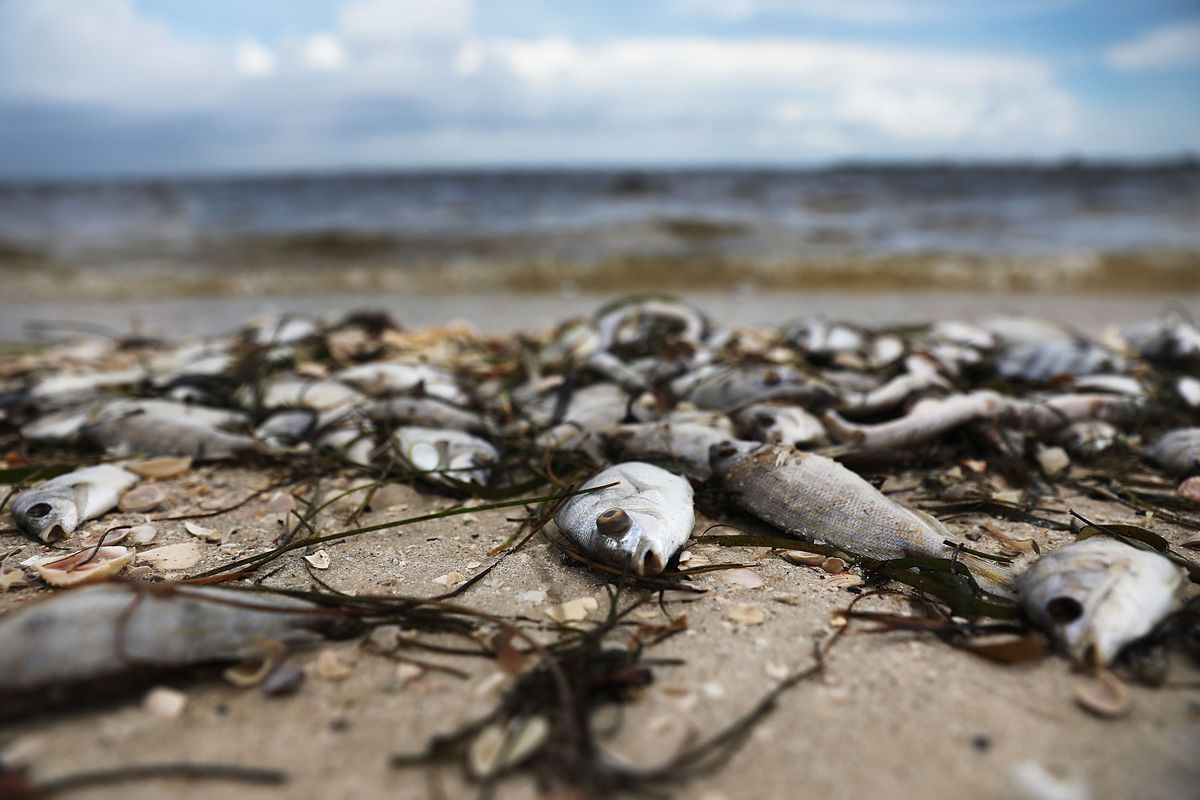
Gov. Ron DeSantis met with a handful of state environmental leaders Thursday morning to discuss the latest developments in red tide research as the harmful algae bloom continues affecting Pinellas County beaches.
“I think it’s a great place to be,” DeSantis said about the state of red tide research. “This is not 2018. Hopefully, we don’t see that this time or anytime in the future.”
The Governor’s presence was met with praise from the panelists, who credited his leadership to the growing focus on addressing red tide in the state, including continued funding.
“Funding would rise and fall depending on whether we had events or not, so if we went a few years without a severe event, the funding would drop and our ability to respond and maintain this network of partners would be diminished,” said Gil McRae, Director of the Florida Fish and Wildlife (FWC) Research Institute. “So we want to thank you for your recognition that continued support is critical for keeping this network intact and responding the way we need to respond.”
Back in 2019, DeSantis signed into law SB 1552, which established the Florida Red Tide Mitigation and Technology Development Initiative, a partnership between FWC and Mote Marine Laboratory to develop technologies and approaches to control and mitigate red tide and its impacts. The bill also provided a $3 million annual appropriation for the program for six years, for a total of $18 million in funding.
“Gil’s point was absolutely on target — the consistency of funding is critical and that’s why I think the Legislature with your leadership has helped us to have that consistent funding for six years,” said marine scientist Mike Crosby, CEO of Mote Marine. “We’re going to grow a whole new science-based industry here in the state that is going to be able to use this advanced technology to be deployed against many kinds of harmful algal blooms. So we’re very, very excited.”
McRae also credited the Governor’s move to reinstate the Red Tide Task Force in 2019 after being inactive for more than a decade. Since 2019, the state has dedicated more than $14.5 million to the Center for Red Tide Research at FWC.
“I’m excited. We obviously had to put capital behind getting funding and we’ve stuck to it, and even in a difficult budget year, last year, with COVID, we made sure that we were able to keep our priorities,” DeSantis said.
The panel also touched on improved technology to detect and mitigate red tide, including an interactive map that provides the results of daily sampling of coastal areas and their red tide concentration.
“We’re going to have a tool chest that is going to be deployable to mitigate these impacts to our environment, to our economy and to our quality of life,” Crosby said. “It wouldn’t have happened if it wasn’t, number one, based on sound science, but number two, the leadership that you and your partners in the Legislature have shown to embrace this vision, to do something.”
During the panel discussion, the Governor prompted panelists with questions on what causes the severity of red tides, referencing the devastating 2018 bloom on the Gulf Coast.
Pinellas County beaches from St. Pete Beach north to Honeymoon Island are currently showing various levels of red tide. Respiratory irritation has been reported at several beaches and fish kills have been present for at least two weeks, though no beaches have officially closed.
“The key is, red tide begins far off shore. It comes inland when the currents are ripe, and then it takes advantage of the nutrient load that are naturally occurring,” Crosby said. “Every year, you’re going to have red tide... But when you get that perfect storm, if you will, of conditions both physical, chemical and biological, then you get these blooms.”
The impact of the Piney Point leak briefly wedged its way into the discussion. Tom Frazer, dean of the University of South Florida College of Marine Science, said that while Piney Point likely did not cause the current bloom, it could have exacerbated it.
“I don’t think you can make a definitive cause and effect kind of a relationship at this point,” Frazer said. “But what I can say is that we all understand that increased nutrient delivery to our coastal waters can exacerbate these blooms, and kind of fuel them for some period of time. I’m pretty pleased with the effort on behalf of the state to reduce those nutrient inputs, moving forward.”



